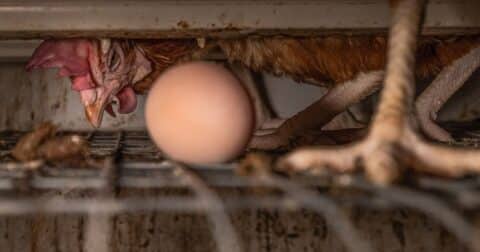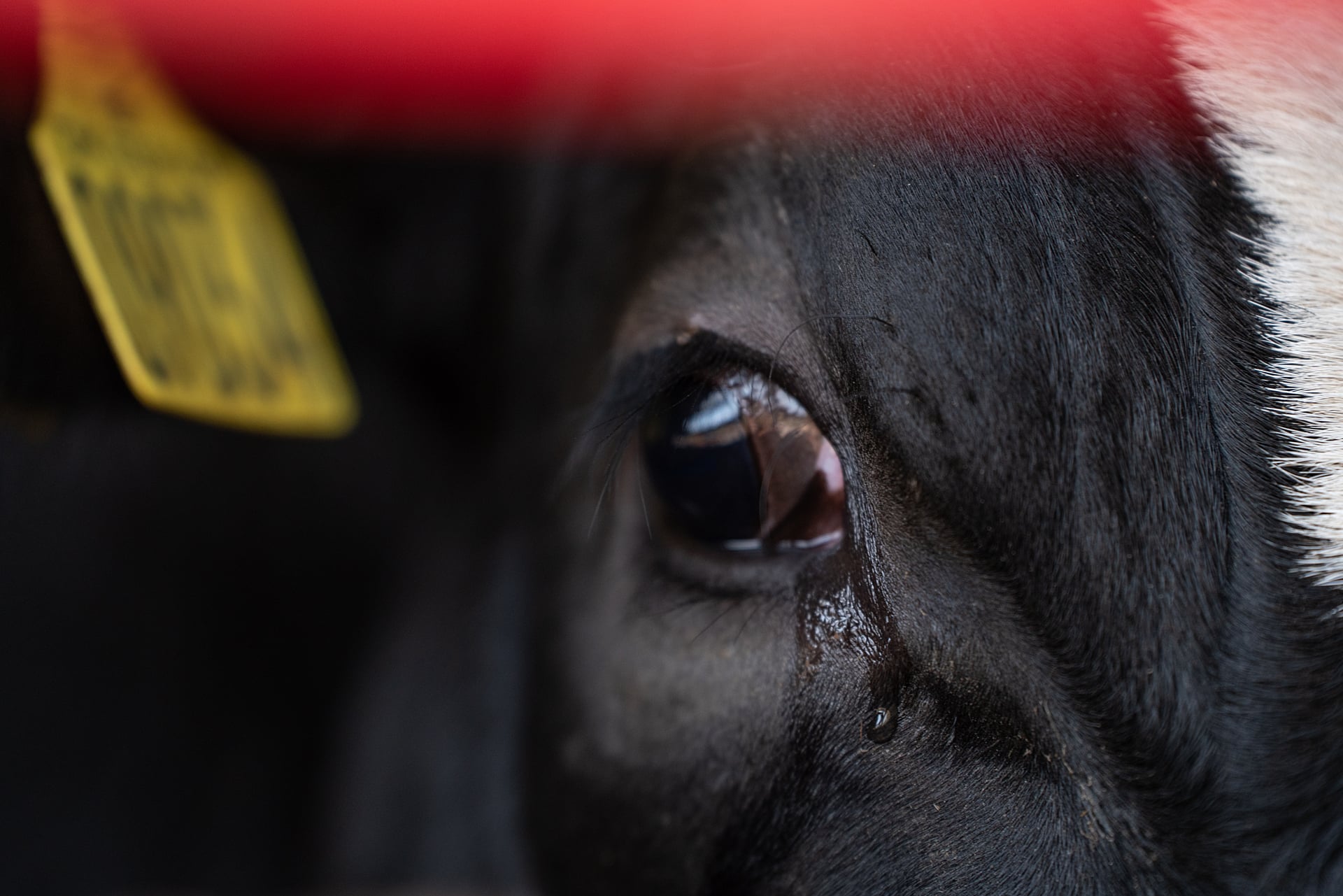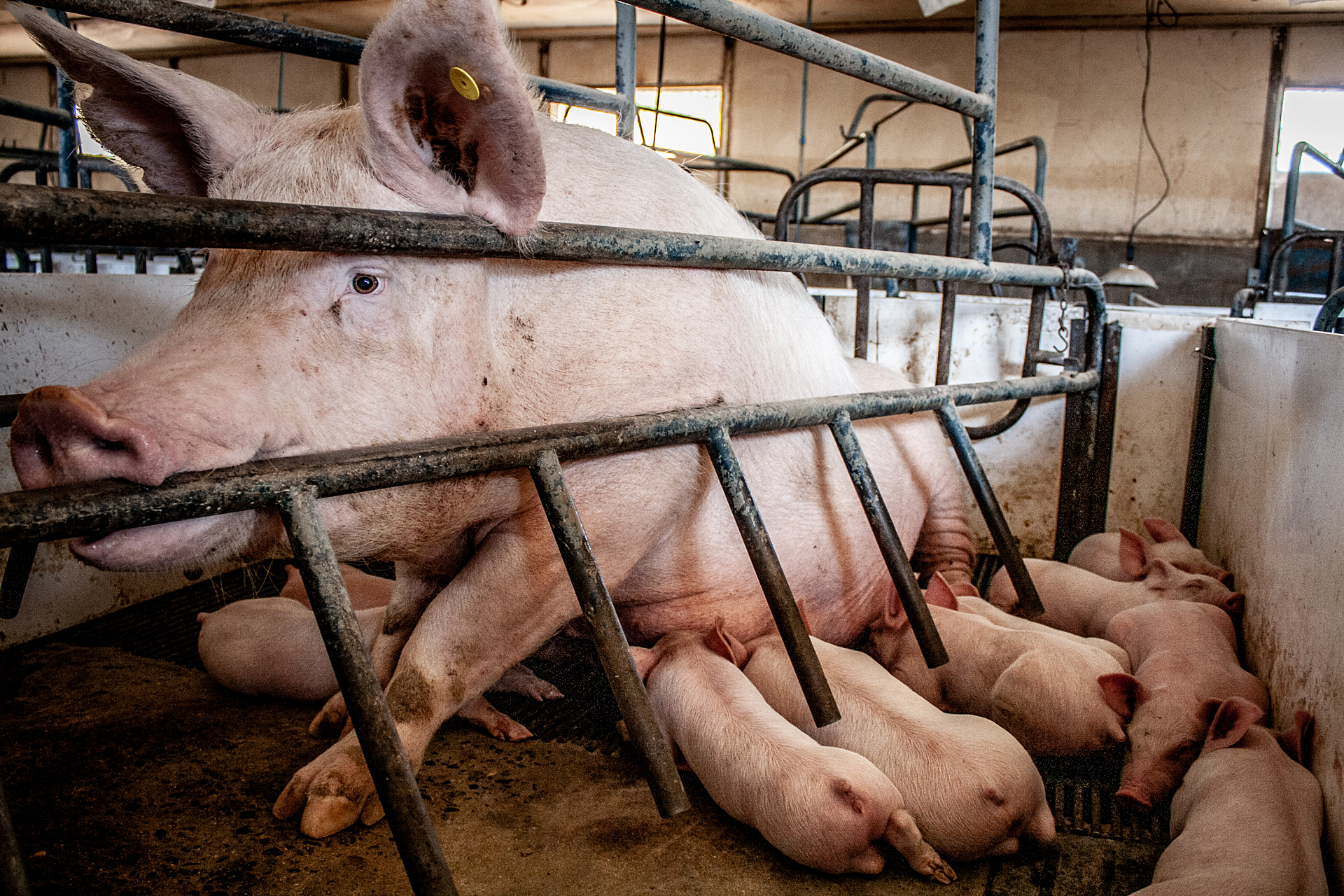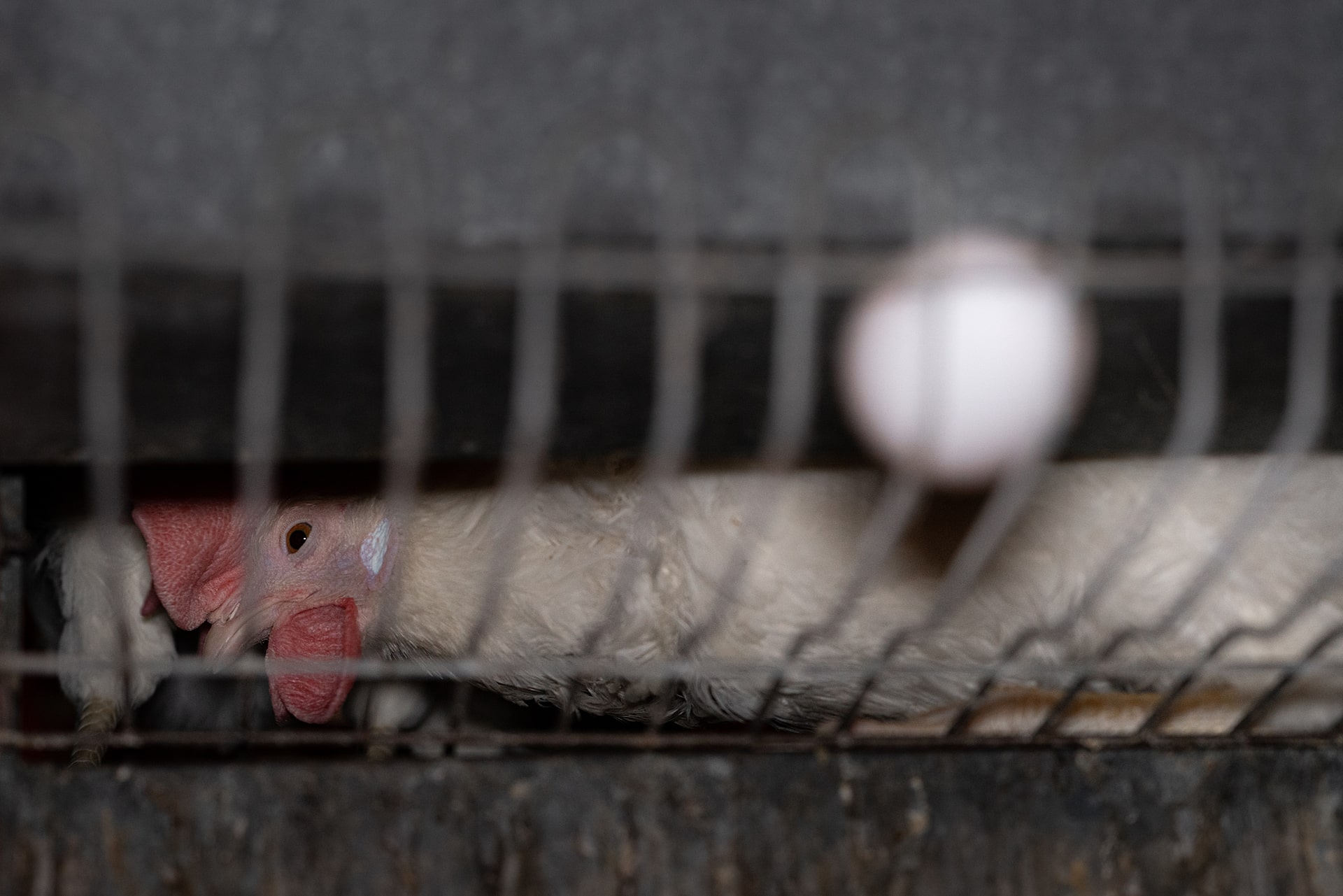Investigation
Oklahoma’s Loophole: How Tyson’s Water Use Goes Unchecked
Food•15 min read
Explainer
How the meat and dairy industries rely on the labor and suffering of mothers.


Words by Seth Millstein
Factory farms disrupt the natural development of animals in a litany of ways, and some of the most disturbing manifestations of this take place in the realm of reproduction. As a matter of course, factory farms exploit female reproductive systems in painful, invasive and often dangerous ways, often hurting the mother and child alike. This goes on largely unchecked; many of these policies are completely legal in most jurisdictions, and those that aren’t are rarely prosecuted.
It’s no secret that factory farms are terrible places for an animal to raise a family, let alone live. With most forms of livestock, for instance, it’s standard practice for farmers to immediately separate newborns from their mothers, usually permanently. This is an extremely disruptive and upsetting process for the animals — yet for many of these mothers, it’s only the beginning of their nightmare.

In order to produce milk, a cow must have recently given birth. As a result, dairy cows are artificially impregnated over and over by dairy farmers for their entire childbearing lives in order to ensure a constant flow of milk. This description, bad as it may sound, doesn’t fully capture the scope and extent of this exploitative practice.
The process of artificially inseminating cattle is far more invasive than many people realize. The human handler begins by inserting their arm into the cow’s anus; this is necessary to flatten her cervix, so that it can receive sperm. Depending on the individual cow’s biology, the human may have to do some squeezing, pulling and general movement of the cow’s internal organs in order to properly prepare her. With their arm still inside the cow’s rectum, the handler then inserts a long, needle-like implement known as a “breeding gun” into the cow’s vagina, and injects sperm into her.
On most cattle farms, a mother’s calves are taken away from her immediately after they’re born, so that the milk she produces can be bottled for human consumption instead of consumed by her young. This intervention in the natural mothering process causes significant distress to the mother, who will often spend days crying out for their calves and futilely looking for them.
Three months later, the cow is artificially inseminated again, and the process repeats itself until she’s no longer able to give birth. At that point, she’s slaughtered for meat.
In addition to the psychological distress and temporary physical pain, this cycle of repeated artificial impregnation often inflicts long-term damage on the cow’s body as well.
Dairy cows are particularly susceptible to mastitis, a potentially-fatal udder infection. When a cow has recently been milked, her teat canals are more susceptible to infection; the fact that dairy cows are milked constantly means that they’re perpetually at risk of contracting mastitis, and that risk increases when they’re milked in unsanitary or unhygienic conditions — for instance, with improperly-cleaned milking equipment — which is often the case on dairy farms.
One study found as much as 70 percent of cows in a UK dairy herd suffer from mastitis — and ironically, the disease actually diminishes a dairy cow’s milk yield. Cows who suffer from it often have fewer viable pregnancies, require a longer “resting period” between pregnancies, get agitated and violent when their udders are touched and give tainted milk.

In the pork industry, mother pigs spend most or all of their lives in either a gestation crate or a farrowing crate. A gestation crate is where a pregnant sow lives, while a farrowing crate is where she’s transferred after giving birth. Both are extremely cramped, confining structures that prevent the mother from standing or turning around — let alone stretching, walking or foraging.
The difference between the two structures is that while a gestation crate only houses the mother, a farrowing crate is divided into two sections — one for the mother, one for her piglets. The two sections are separated by bars, which are spaced far enough apart for the piglets to suckle their mom, but not far enough for their mother to groom them, cuddle with them or provide any of the natural affection that she would in the wild.
The ostensible justification for farrowing cages is to prevent sows from accidentally crushing their piglets to death, which does occasionally happen when pigs have unrestricted access to their piglets. But if the goal is to reduce piglet mortality, farrowing crates are an unmitigated failure: research shows that piglets in farrowing crates die prematurely just as frequently as piglets in more spacious living quarters. They just die for other reasons — like disease, which is rampant in the cramped quarters of factory farms.
Farrowing crates are standard in the pork industry, but despite what their advocates might claim, they don’t save any piglets’ lives. They just make their lives more miserable.

The meat and dairy industry also exploits the reproductive systems of hens in order to maximize egg output. Farmers do this through a practice known as forced molting, but to understand how this works, we first need to talk a bit about regular molting.
Every winter, a chicken will stop laying eggs and start losing her feathers. Over the course of several weeks, she’ll replace her old feathers with new ones, and when this process is finished, she’ll resume laying eggs at a slightly accelerated pace. This process is called molting, and it’s a natural and healthy part of every chicken’s life.
Molting happens, in part, because of how a hen’s reproductive system works. Eggs and feathers both require calcium to grow, and chickens derive calcium from their diets. But food is scarce during the winter, which makes it more difficult for a hen to either grow eggs in her body or feed any chicks that she might give birth to. By growing feathers instead of laying eggs in the winter, a hen accomplishes three things: she preserves the calcium in her body, gives her reproductive system a much-needed break from laying eggs and avoids the possibility of giving birth to chicks during a time of food scarcity.
This is all healthy and good. But on many farms, farmers will artificially induce molting in their hens at an accelerated and unnatural rate, for the sole reason that hens temporarily lay more eggs after a molt than they normally would. They do this in two ways: by limiting hens’ exposure to light, and by starving them.
Light manipulation is standard practice in chicken farms. For most of the year, chickens are exposed to light — usually of the artificial variety — for up to 18 hours a day; the goal of this is to trick the chicken’s body into thinking it’s spring, so that they’ll lay eggs. During the forced molt, however, farmers do the opposite, temporarily limiting the chickens’ light exposure so that their bodies think it’s winter — molting time.
In addition to daylight changes, chickens also molt in response to stress and weight loss, and depriving a chicken of food causes both. It’s common for farmers to starve chickens for up to two weeks in order to force a molt; unsurprisingly, this results in more chickens dying than during non-molting periods.
All of this amounts to an egregious interference in a hen’s natural reproductive cycle. Dairy farmers first starve chickens to trick their bodies into laying fewer eggs. When they’re finally fed again, the hens’ bodies assume that it’s a healthy time to start having babies, and so they begin producing eggs again. But those eggs are never fertilized, and they don’t grow into chicks. Instead, they’re taken from the hens and sold in grocery stores.
Although there are some laws on the books that forbid or regulate these practices, they’re inconsistently applied — and in some cases, they aren’t applied at all.
Forced molting is against the law in the United Kingdom, India and the European Union. Ten U.S. states have banned, or at least limited, the use of gestation crates in pig farms, and farrowing cages are illegal in Switzerland, Sweden and Norway.
Outside of these relatively limited exceptions, all of the above practices are legal. As of this writing, there are no laws anywhere specifically banning the repeated artificial insemination of dairy cows.
Many jurisdictions do have general laws against animal cruelty, and in theory, those laws might prevent some of these practices. But most animal cruelty laws contain specific exemptions for livestock producers — and when slaughterhouses do violate the letter of the law, they usually aren’t prosecuted for doing so.
One particularly stark example of this is in Kansas. As The New Republic noted in 2020, the practice of artificially inseminating cows directly violates the state’s anti-bestiality law, which forbids “any penetration of the female sex organ by…any object,” for any reason other than healthcare. Needless to say, none of the 27,000 cattle farms in Kansas are being prosecuted for bestiality.
To be sure, female farm animals aren’t the only victims of reproductive exploitation. Male cows are subject to an horrific practice known as electroejaculation, whereby an electrical probe is inserted into their anus and the voltage is gradually increased until they either ejaculate or pass out.
None of the animals on factory farms are living their best lives, but ultimately, the industry is built on the backs of female animals, and the exploitation of their reproductive systems.
When they are allowed to live freely, animals have developed some truly remarkable methods of reproduction, each tailored to their individual needs as a species. Through centuries of observation and research, scientists have gained, and continue to gain, incredible insights into how animals pass their genes onto the next generation to ensure their survival.
Unfortunately, our growing knowledge of animal biology comes at a cost, and in factory farms, animal mothers are footing the bill.